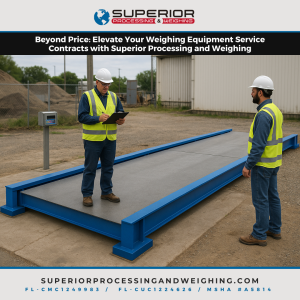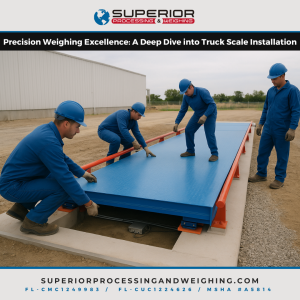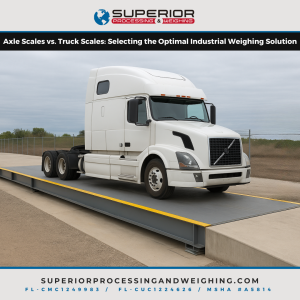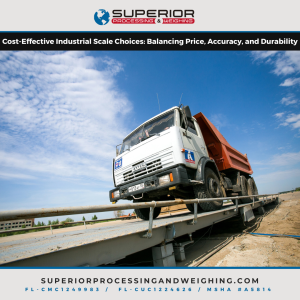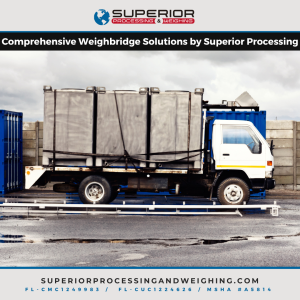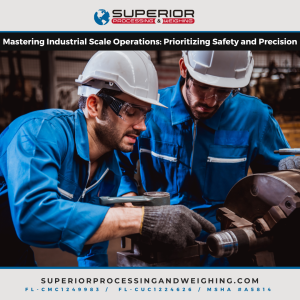At Superior Processing and Weighing, we understand that investing in an industrial pit scale is a crucial decision for any business. This comprehensive process demands meticulous planning and execution to ensure reliability and precision in weighing operations. In this article, we will guide you through the key steps involved in the installation of an industrial pit scale, emphasizing the critical role of precision in industrial processes.
The Backbone of Industrial Precision
Before delving into the installation process, it is imperative to grasp the essence of industrial pit scales and their application in diverse industries. Industrial pit scales are engineered to efficiently weigh large vehicles and substantial loads. Typically, they are embedded in a concrete pit, thereby facilitating easy access and safe loading and unloading of materials.
We cater to clients in various industries, including manufacturing, recycling, and automobile production, where precise measurements are indispensable. Our clientele benefits from our expertise in delivering affordable industrial weighing solutions tailored to meet their specific needs.
Step 1: Assessing Site Requirements
Laying the Groundwork for Precision
The initial step in the installation of an industrial pit scale involves a thorough site assessment. We meticulously evaluate the location to ascertain factors such as:
- Space Availability: Ensuring sufficient room for both the scale and the vehicles that will utilize it.
- Ground Stability: Checking soil conditions and verifying that the ground can support the weight of the scale and vehicles.
- Access Roads: Evaluating access points to guarantee smooth entry and exit for trucks and other vehicles.
By understanding these prerequisites, we can recommend the most suitable industrial scales for your specific application.
Step 2: Designing the Pit
Crafting the Foundation for Success
Following the site assessment, we advance to the design phase for the pit where the scale will be installed. This crucial stage involves:
- Dimensions: Determining the proper size of the pit based on the scale dimensions and the sizes of the vehicles.
- Drainage: Implementing drainage solutions to avert water accumulation that could adversely impact scale performance.
- Structural Support: Ensuring the pit has adequate structural support to accommodate heavy loads without compromising stability.
During this phase, we engage closely with our clients to ensure that all design specifications align with their operational needs.
Step 3: Excavation and Construction
Building a Solid Foundation for Accuracy
With a finalized design in place, we proceed to the excavation and construction phase. This step involves:
- Excavating the Pit: We carefully excavate the area in accordance with the specified dimensions.
- Concrete Work: Pouring concrete to create the bottom and walls of the pit while ensuring compliance with all safety standards.
- Reinforcement: Integrating steel reinforcements as necessary to bolster structural integrity.
We recognize that meticulous industrial weighing safety begins with a solid foundation. Consequently, we execute this phase with the utmost care to ensure durability and reliability.
Step 4: Installing the Scale
Precision in Placement for Optimal Performance
Once construction is complete, we proceed to install the industrial scale. This process typically involves:
- Positioning: Precisely placing the scale into the pit to guarantee accurate measurements.
- Connecting Electronics: While we do not handle digital scales, we ensure that any necessary components for analog systems are properly connected.
- Calibration Preparation: Checking all mechanical components, preparing the scale for calibration.
At Superior Processing and Weighing, we prioritize industrial scale accuracy during this vital stage, as it sets the stage for dependable operation.
Step 5: Calibration
Ensuring Accuracy from the Start
The subsequent step involves the indispensable process of calibration. We offer comprehensive industrial scale calibration services to ensure that your new pit scale delivers accurate results right from the start. Our calibration process includes:
- Initial Checks: Verifying that all components function correctly prior to the commencement of calibration.
- Weight Testing: Employing certified weights to test the scale’s accuracy under diverse load conditions
- Adjustments: Making necessary adjustments to ensure precise readings.
We emphasize the importance of regular scale calibration as part of our ongoing commitment to quality and safety.
Step 6: Training and Maintenance
Empowering Your Team for Continued Success
After installation and calibration, we provide training sessions tailored for your staff. Our aim is to equip your team with the knowledge to effectively operate the scale and maintain its accuracy over time. Key training topics include:
- Operating Procedures: Best practices for using the industrial pit scale safely and efficiently.
- Maintenance Tips: Routine checks and maintenance tasks that help extend the scale’s lifespan.
- Troubleshooting: Identifying common issues and knowing when to seek our expert repair services.
We firmly believe that investing in training will empower your team to maximize the benefits of accurate industrial weighing.
Collaborative Excellence for Operational Success
At Superior Processing and Weighing, our commitment transcends merely selling or renting equipment; we aspire to be your trusted partner in attaining operational excellence. The process of installing an industrial pit scale is paramount, and we pride ourselves on delivering comprehensive support every step of the way.
Whether you manage a manufacturing facility, recycling center, or automotive production line, our expertise guarantees that you receive high-quality solutions designed to meet your unique needs. By choosing us, you gain access to reliable equipment backed by professional calibration services, ultimately leading to enhanced productivity and safety.
We invite you to reach out today to discuss how we can assist you with your industrial weighing needs. Together, we can create an environment where accurate measurements foster operational success.


